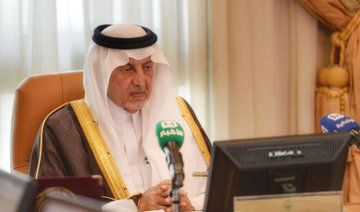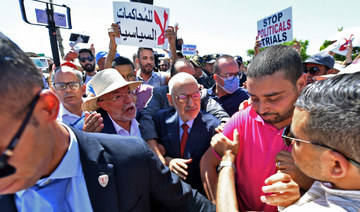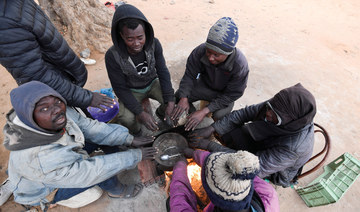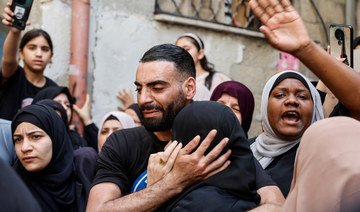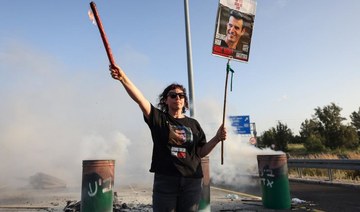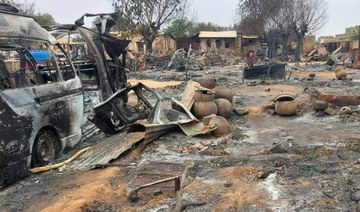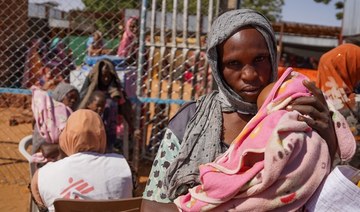RABAT: Morocco’s King Mohammed VI underwent successful heart surgery in France on Monday, state news agency MAP said.
The 54-year old king was treated at a Paris clinic after suffering from a “heart rhythm disorder” on Jan. 20, the agency said, adding he had been diagnosed with an “atrial flutter.”
The surgery normalized the heart rhythm, and the king would be able to resume his duties without any restrictions, MAP said.
The king, who heads the Muslim world’s longest-serving dynasty, took office in 1999 after his father, Hassan II, died of a heart attack.
The political and social stability of Morocco is closely watched by Western governments as it is the only country in North Africa where jihadist groups have failed to gain a foothold, and is an important partner against Islamist militancy in terms of intelligence-sharing.
The kingdom has escaped mass uprisings such as in Egypt, Libya or other Arab countries, but protests have erupted since 2016 in some rural areas against poverty and unemployment.
Morocco has averted previous protests with a combination of limited constitutional reforms, heavy policing and hefty public spending.
Morocco’s king undergoes successful heart surgery: state news agency
Morocco’s king undergoes successful heart surgery: state news agency
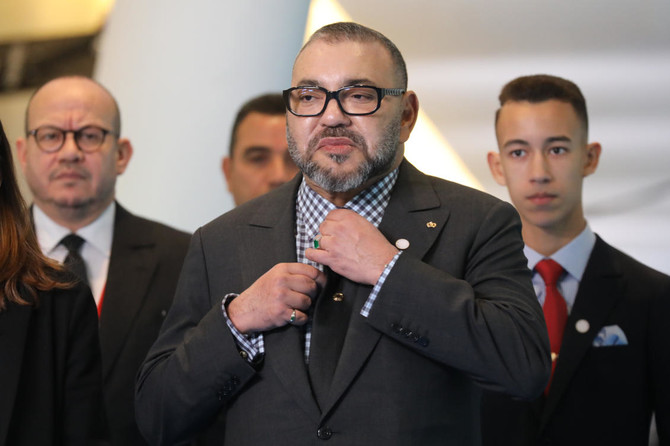
Israeli forces kill five Palestinians in overnight raid near West Bank’s Tulkarm
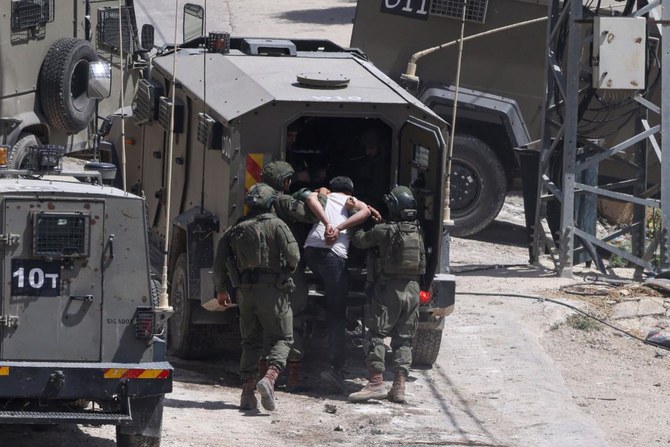
The Israeli military said an officer from a special police unit was wounded in the operation and hospitalized
TULKARM, West Bank: Israeli forces killed five Palestinians in an overnight raid in a village near the city of Tulkarm in the occupied West Bank, the Palestinian health ministry and the Israeli military said on Saturday.
The health ministry said it had identified four of the five who died during the raid in Deir Al-Ghusun. Israeli forces took some of the dead bodies, according to the official Palestinian news agency Wafa and a Reuters reporter at the scene.
The Israeli military said an officer from a special police unit was wounded in the operation and hospitalized. It said its forces retaliated using live ammunition and shoulder-fired missiles after they were fired on.
Saturday’s operation near the flashpoint city of Tulkarm was the latest in a series of clashes in the occupied West Bank between Israeli forces and Palestinians that has been escalating for more than two years but which has picked up in intensity since the Hamas-led attack on Israel last October.
According to Palestinian Health Ministry records, 492 Palestinians have been killed by Israeli forces or Jewish settlers in the West Bank or East Jerusalem since Oct. 7. Many have been armed fighters but stone-throwing youths and uninvolved civilians have also been killed.
Palestinians want the West Bank and Gaza, which Israel captured in the 1967 Middle East war, as the core of an independent state with East Jerusalem as its capital.
US-backed talks to reach an agreement between Israel and the Palestinians have been stalled for the past decade but the Gaza war has raised pressure for a revival of efforts to reach a two-state solution.
More than 34,000 Palestinians have been killed in Israel’s seven-month-old assault on the Gaza Strip, say health officials in the Hamas-ruled enclave. The war began when Hamas militants attacked Israel on Oct. 7, killing 1,200 people and abducting 252 others, of whom 132 are believed to remain in captivity in Gaza, according to Israeli tallies.
Tunisian protesters demand eviction of migrant encampment
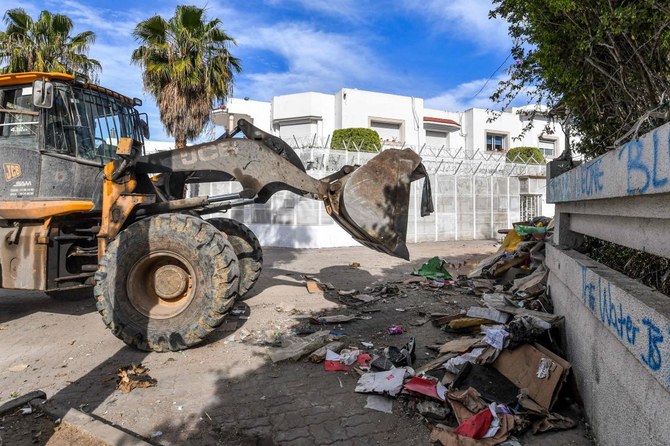
- The demonstration in the small town in central Tunisia follows recent crackdowns by authorities on similar encampments in the capital Tunis and other areas
- In El Amra, protesters called for the “departure” of migrants and the “quick” eviction of the thousands estimated to be staying there
EL AMRA, Tunisia: Hundreds of Tunisians rallied Saturday in the town of El Amra to protest makeshift camps for migrants primarily from sub-Saharan African countries, an AFP correspondent said.
The demonstration in the small town in central Tunisia follows recent crackdowns by authorities on similar encampments in the capital Tunis and other areas, often after complaints from local residents.
In El Amra, protesters called for the “departure” of migrants and the “quick” eviction of the thousands estimated to be staying there, the correspondent said.
Lawmaker Tarek Mahdi said that the “immediate solution” should be to get migrants to “leave urban areas and cities.”
The situation has become “unacceptable” and “the authorities must find a solution,” said Mahdi, who represents El Amra in parliament.
He added that other countries should help Tunisia to deal with a “very significant flow” of migrants.
The town is located about 40 kilometers (25 miles) north of Sfax, a key departure point for Europe-bound sea journeys from where migrants had been forcibly removed late last year.
Many migrants have fled to towns like El Amra, setting up encampments before they can make the perilous Mediterranean crossing, as Tunisian authorities and the European Union have ramped up efforts to curb irregular migration.
A surge of anti-migrant violence last year, following remarks by President Kais Saied who painted “illegal” foreigners as a demographic threat, has also pushed many out of main cities and into smaller towns.
Migrants attempting the sea crossing in search of a better life in Europe often aim to reach Italy, whose Lampedusa island lies some 150 kilometers away from Sfax, Tunisia’s second city.
In recent weeks, authorities raided several encampments, tearing down tents and expelling migrants.
The non-governmental Tunisian Forum for Social and Economic Rights said that authorities in Tunis on Friday cleared encampments and expelled hundreds of asylum seekers, migrants and refugees, sending them in buses to a western area near the Algerian border.
In a statement, the interior ministry said “security measures” had been taken to “deal with attacks on public and private property.”
Last month, Italian Prime Minister Giorgia Meloni visited Tunisia for a fourth time in less than a year to sign deals aiming to curb migration.
A day before her visit, Saied said that Tunisia must not become “a country of transit or settlement” for the tens of thousands of migrants attempting to cross the Mediterranean to Europe every year.
Hamas negotiators begin Gaza truce talks, CIA chief also present in Cairo
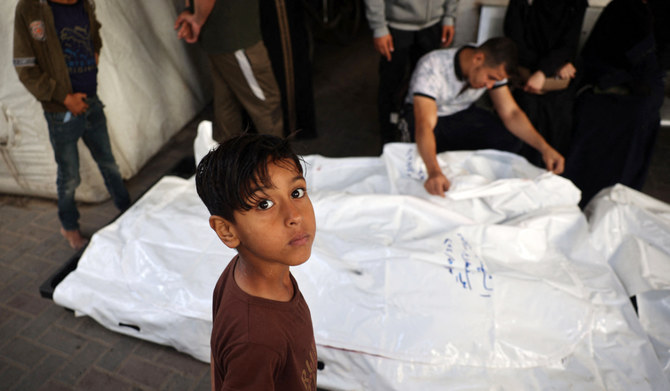
- A top Hamas official earlier accused Israeli Prime Minister Benjamin Netanyahu of trying to derail a proposed Gaza truce
CAIRO: Hamas negotiators began intensified talks on Saturday on a possible Gaza truce that would see a halt to the fighting and the return to Israel of some hostages, a Hamas official told Reuters, with the CIA director already present in Cairo for the indirect diplomacy.
The Hamas delegation arrived from the Palestinian Islamist movement’s political office in Qatar, which, along with Egypt, has tried to mediate a follow-up to a brief November ceasefire amid mounting international dismay over the soaring death toll in Gaza and the plight of its 2.3 million inhabitants.
Taher Al-Nono, a Hamas official and adviser to Hamas chief Ismail Haniyeh, said meetings with Egyptian and Qatari mediators had begun and Hamas was dealing with their proposals “with full seriousness and responsibility.”
However, he reiterated the group’s demand that any deal should include an Israeli pullout from Gaza and an end to the war, conditions that Israel has previously rejected.
“Any agreement to be reached must include our national demands; the complete and permanent ending of the aggression, the full and complete withdrawal of the occupation from Gaza Strip, the return of the displaced to their homes without restriction and a real prisoner swap deal, in addition to the reconstruction and ending the blockade,” the Hamas official told Reuters.
An Israeli official signalled its core position on this was unchanged, saying “Israel will under no circumstances agree to ending the war as part of a deal to free our hostages.”
The war began after Hamas stunned Israel with a cross-border raid on Oct. 7 in which 1,200 people were killed and 252 hostages taken, according to Israeli tallies.
More than 34,600 Palestinians have been killed — 32 of them in the past 24 hours — and more than 77,000 have been wounded in Israel’s military operation, according to Gaza’s health ministry. The bombardment has laid waste to much of the coastal enclave.
PRESSURE FOR DEAL
Before the talks began there was some optimism over a potential deal.
“Things look better this time but whether an agreement is on hand would depend on whether Israel has offered what it takes for that to happen,” a Palestinian official with knowledge of the mediation efforts, who asked not to be named, told Reuters.
Washington — which, like other Western powers and Israel, brands Hamas a terrorist group — has urged it to enter a deal.
Progress has stumbled, however, over Hamas’ long-standing demand for a commitment to end the offensive by Israel, which insists that after any truce it would resume operations designed to disarm and dismantle the faction.
Hamas said on Friday it would come to Cairo in a “positive spirit” after studying the latest proposal for a deal, little of which has been made public.
Israel has given a preliminary nod to terms which one source said included the return of between 20 and 33 hostages in exchange for the release of hundreds of Palestinian prisoners and a weeks-long suspension of fighting.
That would leave around 100 hostages in Gaza, some of whom Israel says have died in captivity. The source, who asked not to be identified by name or nationality, told Reuters their return may require an additional deal with broader Israeli concessions.
“That could entail a de facto, if not formal, end to the war — unless Israel somehow recovers them through force or generates enough military pressure to make Hamas relent,” the source said.
Egyptian sources said CIA Director William Burns arrived in Cairo on Friday. He has been involved in previous truce talks and Washington has signalled there may be progress this time.
The CIA declined to comment on Burns’ itinerary.
Egypt made a renewed push to revive negotiations late last month, alarmed by the prospect of an Israeli assault against Hamas in the southern Gaza city of Rafah, where more than 1 million Palestinians have taken shelter near the border with Egypt’s Sinai Peninsula.
A major Israeli operation in Rafah could deal a huge blow to fragile humanitarian operations in Gaza and put many more lives at risk, according to UN officials. Israel says it will not be deterred from taking Rafah eventually, and is working on a plan to evacuate civilians.
Saturday’s Cairo talks come as Qatar reviews its role as mediator, according to an official familiar with Doha’s thinking. Qatar may cease hosting the Hamas political office, said the official, who did not know if, in such a scenario, the Palestinian group’s delegates might also be asked to leave.
UN official warns famine in northern Gaza is already ‘full-blown’
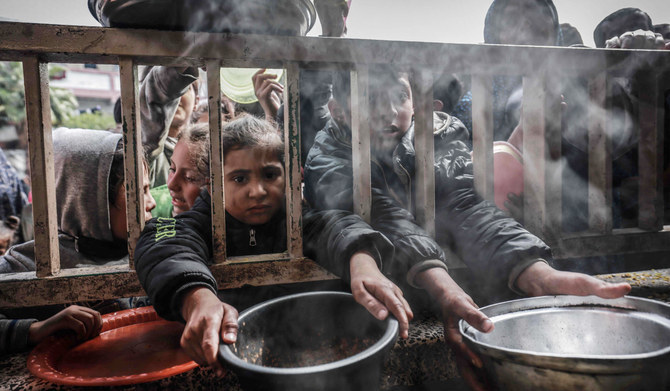
- Israel has killed more than 34,000 Palestinians since Oct. 7 attacks by Hamas
- There was no immediate comment from Israel, which controls entrance into Gaza
WASHINGTON: A top UN official said Friday that hard-hit northern Gaza was now in “full-blown famine” after more than six months of war between Israel and Hamas and severe Israeli restrictions on food deliveries to the Palestinian territory.
Cindy McCain, the American director of the UN World Food Program, became the most prominent international official so far to declare that trapped civilians in the most cut-off part of Gaza had gone over the brink into famine.
“It’s horror,” McCain told NBC’s “Meet the Press” in an interview to air Sunday. “There is famine — full-blown famine — in the north, and it’s moving its way south.”
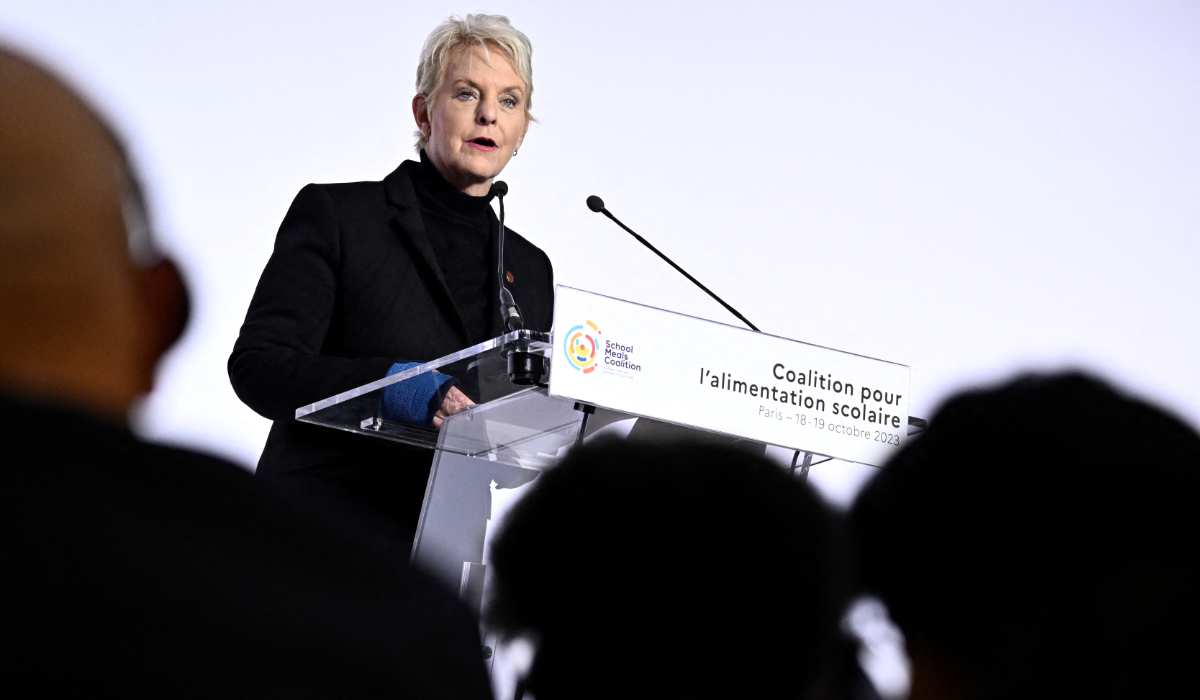
She said a ceasefire and a greatly increased flow of aid through land and sea routes was essential to confronting the growing humanitarian catastrophe in Gaza, home to 2.3 million people.
There was no immediate comment from Israel, which controls entrance into Gaza and says it is beginning to allow in more food and other humanitarian aid through land crossings.
The panel that serves as the internationally recognized monitor for food crises said earlier this year that northern Gaza was on the brink of famine and likely to experience it this month. The next update will not come before this summer.
One of the US Agency for International Development’s humanitarian officials in Gaza told The Associated Press that on-the-ground preparations for a new US-led sea route were on track to bring in more food — including treatment for hundreds of thousands of starving children — by early or mid-May. That’s when the American military expects to finish building a floating pier to receive the shipments.
Ramping up the delivery of aid on the planned US-backed sea route will be gradual as aid groups test the distribution and security arrangements for relief workers, the USAID official said.
The official spoke on condition of anonymity over security concerns for work done in a conflict zone. They were some of the agency’s first comments on the status of preparations for the Biden administration’s $320 million Gaza pier project, for which USAID is helping coordinate on-the-ground security and distribution.
At a factory in rural Georgia on Friday, USAID Administrator Samantha Power pointed to the food crises in Gaza and other parts of the world as she announced a $200 million investment aimed at increasing production of emergency nutritional paste for starving children under 5.
Power spoke to factory workers, peanut farmers and local dignitaries sitting among pallets of the paste at the Mana nonprofit in Fitzgerald. It is one of two factories in the US that produces the nutritional food, which is used in clinical settings and made from ground peanuts, powdered milk, sugar and oil, ready to eat in plastic pouches resembling large ketchup packets.
“This effort, this vision meets the moment,” Power said. “And it could not be more timely, more necessary or more important.”
Under pressure from the US and others, Israeli officials in recent weeks have begun slowly reopening some border crossings for relief shipments.
But aid coming through the sea route, once it’s operational, still will serve only a fraction — half a million people — of those who need help in Gaza. Aid organizations including USAID stress that getting more aid through border crossings is essential to staving off famine.
Children under 5 are among the first to die when wars, droughts or other disasters curtail food. Hospital officials in northern Gaza reported the first deaths from hunger in early March and said most of the dead were children.
Power said the UN has called for 400 metric tons of the nutritional paste “in light of the severe hunger that is pervading across Gaza right now, and the severe, acute humanitarian crisis.” USAID expects to provide a quarter of that, she said.
Globally, she said at the Georgia factory, the treatment made there “will save untold lives, millions of lives.”
USAID is coordinating with the World Food Program and other humanitarian partners and governments on security and distribution for the pier project, while US military forces finish building it. President Joe Biden, under pressure to do more to ease the humanitarian catastrophe in Gaza as the US provides military support for Israel, announced the project in early March.
US Central Command said in a statement Friday that offshore assembly of the floating pier has been temporarily paused due to high winds and sea swells, which caused unsafe conditions for soldiers. The partially built pier and the military vessels involved have gone to Israel’s Port of Ashdod, where the work will continue.
A US official said the high seas will delay the installation for several days, possibly until later next week. The official, who spoke on condition of anonymity to discuss operation details, said the pause could last longer if the bad weather continues because military personnel and divers have to get into the water for the final installation.
The struggles this week with the first aid delivery through a newly reopened land corridor into north Gaza underscored the uncertainty about security and the danger still facing relief workers. Israeli settlers blocked the convoy before it crossed Wednesday. Once inside Gaza, the convoy was commandeered by Hamas militants, before UN officials reclaimed it.
In Gaza, the nutritional treatment for starving children is most urgently needed in the northern part of the Palestinian territory. Civilians have been cut off from most aid supplies, bombarded by Israeli airstrikes and driven into hiding by fighting.
Acute malnutrition rates there among children under 5 have surged from 1 percent before the war to 30 percent five months later, the USAID official said. The official called it the fastest such climb in hunger in recent history, more than in grave conflicts and food shortages in Somalia or South Sudan.
One of the few medical facilities still operating in northern Gaza, Kamal Adwan hospital, is besieged by parents bringing in thousands of children with malnutrition for treatment, the official said. Aid officials believe many more starving children remain unseen and in need, with families unable to bring them through fighting and checkpoints for care.
Saving the gravely malnourished children in particular requires both greatly increased deliveries of aid and sustained calm in fighting, the official said, so that aid workers can set up treatment facilities around the territory and families can safely bring children in for the sustained treatment needed.
The UN warns Sudan’s warring parties that Darfur risks starvation and death if aid is not allowed in
The UN warns Sudan’s warring parties that Darfur risks starvation and death if aid is not allowed in
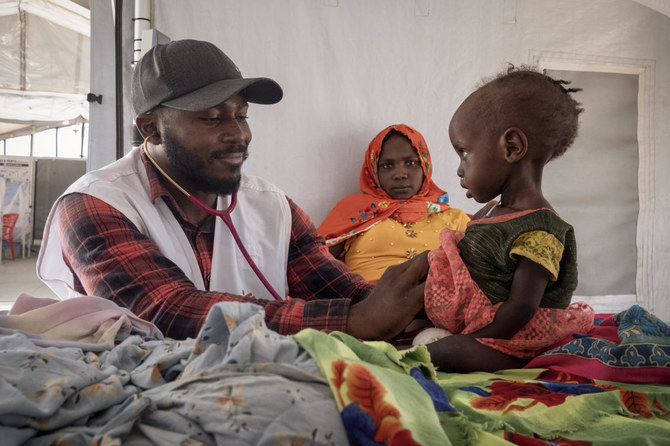
- At least 1.7 million people in Darfur were experiencing emergency levels of hunger in December
- Sudan plunged into chaos in mid-April 2023, when long-simmering tensions between the military and the paramilitary forces broke out into street battles
UNITED NATIONS: The United Nations food agency warned Sudan’s warring parties Friday that there is a serious risk of widespread starvation and death in Darfur and elsewhere in Sudan if they don’t allow humanitarian aid into the vast western region.
Leni Kinzli, the World Food Programme’s regional spokesperson, said at least 1.7 million people in Darfur were experiencing emergency levels of hunger in December, and the number “is expected to be much higher today.”
“Our calls for humanitarian access to conflict hotspots in Sudan have never been more critical,” she told a virtual UN press conference from Nairobi.
Sudan plunged into chaos in mid-April 2023, when long-simmering tensions between its military led by Gen. Abdel Fattah Burhan, and the paramilitary Rapid Support Forces commanded by Mohammed Hamdan Dagalo, broke out into street battles in the capital, Khartoum. Fighting has spread to other parts of the country, especially urban areas and the Darfur region.
The paramilitary forces, known as the RSF, have gained control of most of Darfur and are besieging El Fasher, the only capital in Darfur they don’t hold, where some 500,000 civilians had taken refuge.
Kinzli said WFP’s partners on the ground report that the situation in El Fasher is “extremely dire” and it’s difficult for civilians wanting to flee the reported RSF bombings and shelling to leave.
She said the violence in El Fasher and surrounding North Darfur is exacerbating the critical humanitarian needs in the entire Darfur region, where crop production for staple cereals like wheat, sorghum and millet is 78 percent less than the five-year average.
On top of the impact of escalating violence, Kinzli said, “WFP is concerned that hunger will increase dramatically as the lean season between harvests sets in and people run out of food.” She said a farmer in El Fasher recently told her that her family had already run out of food stocks and is living day-to-day, an indication that the “lean season,” which usually starts in May, started earlier.
Kinzli said she received photos earlier Friday from colleagues on the ground of severely malnourished children in a camp for displaced people in Central Darfur, as well as older people “who have nothing left but skin and bones.”
“Recent reports from our partners indicate that 20 children have died in recent weeks of malnutrition in that IDP camp,” she said.
“People are resorting to consuming grass and peanut shells,” Kinzli said. “And if assistance doesn’t reach them soon, we risk witnessing widespread starvation and death in Darfur and across other conflict-affected areas in Sudan.”
Kinzli called for “a concerted diplomatic effort by the international community to push the warring parties to provide access and safety guarantees” for humanitarian staff and convoys.
“One year of this devastating conflict in Sudan has created an unprecedented hunger catastrophe and threatens to ignite the world’s largest hunger crisis,” she warned. “With almost 28 million people facing food insecurity across Sudan, South Sudan and Chad, the conflict is spilling over and exacerbating the challenges that we’ve already been facing over the last year.”
In March, Sudanese authorities revoked WFP’s permission to deliver aid from neighboring Chad to West Darfur and Central Darfur from the town of Adre, saying that crossing had been used to transfer weapons to the RSF. Kinzli said restrictions from Sudanese authorities in Port Sudan are also preventing WFP from transporting aid via Adre.
Sudanese authorities approved the delivery of aid from the Chadian town of Tina to North Darfur, but Kinzli said WFP can no longer use that route for security reasons because it goes directly into besieged El Fasher.
On Thursday, gunmen in South Darfur killed two drivers for the International Committee of the Red Cross and injured three ICRC staff members. On Friday, UN humanitarian chief Martin Griffith called the killing of aid works “unconscionable.”
Kinzli said the fighting “and endless bureaucratic hurdles” have prevented WFP from delivering aid to over 700,000 people in Darfur ahead of the rainy season when many roads become impassable.
“WFP currently has 8,000 tons of food supplies ready to move in Chad, ready to transport, but is unable to do so because of these constraints,” she said.
“WFP urgently requires unrestricted access and security guarantees to deliver assistance,” she said. “And we must be able to use the Adre border crossing, and move assistance across front lines from Port Sudan in the east to Darfur so we can reach people in this desperate region.”




